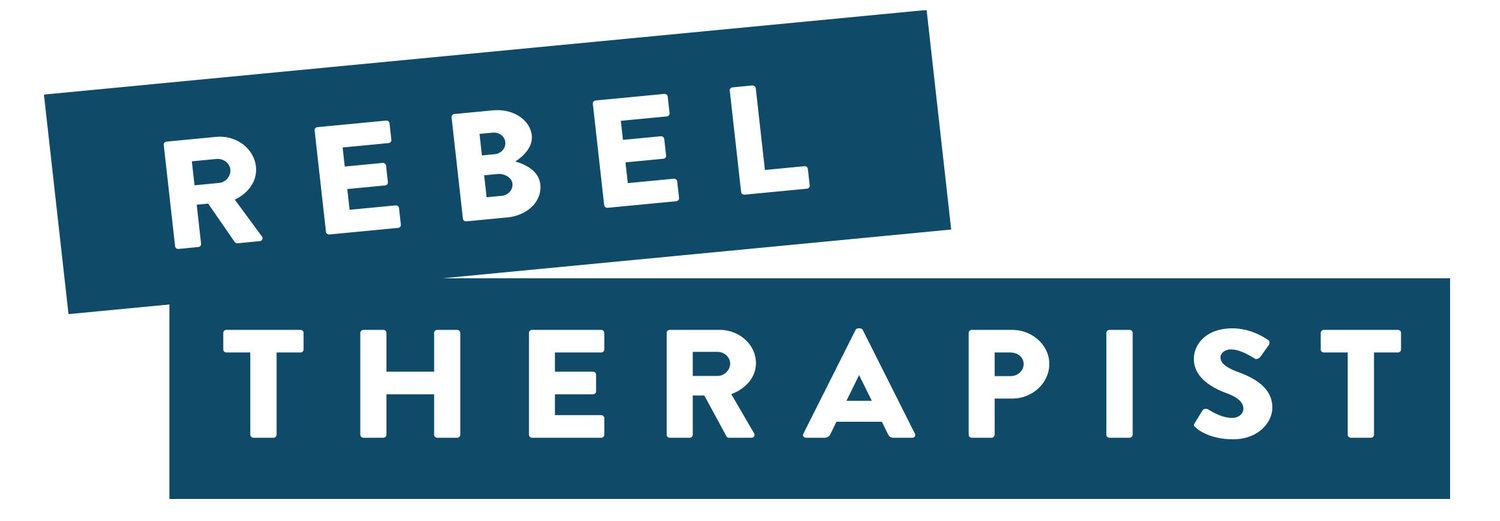Here's a question I hear all the time:
I want to get off insurance panels. Can I do it? Will my therapy practice survive?
You’re considering getting off of insurance panels. You want to stop doing all that paperwork, you want more freedom to practice the way you believe works best for your clients, and you want to make more per session.
Yes, you can transition to a private-pay therapy practice. If you’re ready to take steps to get off of panels and revamp your practice, I’m happy and excited for you.
Many of the therapists I work with transition their businesses from insurance-based practices to private pay practices. After this transition, they have more satisfying and profitable businesses.
Here’s how you can do the transition well:
Before you do take any steps, stop listening to messages that say this can’t be done. Perhaps those messages are coming from your own head, or from the mouths of your frightened colleagues. When therapists tell you that you can’t have a successful private pay therapy practice, remember that these their fears, not facts. When you get ready to make any bold business move, some therapists will respond with their own anxiety and projections. You can have compassion for their feelings, but don’t take them on.
You’ll want a plan with 2 major components, exiting the panels and increasing your marketing.
Getting off the panels
It’s normal to feel afraid when you get ready to leap. I don't want you to lose sleep.
You’re going to go step by step, leaving one panel at a time. Choose the one that brings the lowest reimbursement or the one that creates the most stress in your life. Read the contract so that you understand the process you’ll need to go through, and enter into the termination period.
Examine your expectations. I recently spoke with a therapist who is planning to exit her most headache-inducing panel, and she estimated that she’d be losing 7 or 8 clients a week. When I asked her follow up questions and we did the math, she realized she’d only need 3 or 4 private pay sessions per week to replace the income, even if every single person using that insurance decided to leave.
Start conversations with your clients who use that insurance, and prepare your mindset first. Work through your guilt, fear, or anything else you’re feeling so that you can be totally present for these conversations.
Expect some of those clients who use insurance to stick with you and become private pay clients. Your clients may experience feelings of abandonment, but they also may feel comforted that you’re modeling good self-care. Decide what fee you’d be willing to accept before you start the conversations so that you’re not figuring it out in the session.
If clients using that insurance enter your practice during the termination period, talk through the timeline and expectations with them before you start therapy.
If you can’t tolerate or afford the risk of a dip in your practice, plan to accept a few lower-fee clients, including some of the people who’s insurance you’ll no longer be accepting. Don’t do this as a knee-jerk reaction, but rather make sure it fits with your long-term business goals. Make sure you are maintaining at least your current average reimbursement rate when you lower your fee.
Once you’ve completed the process with one panel, exiting the next panel will be a lot less scary.
Marketing
You’ll use that extra time that would have gone to insurance paperwork to authentically market your practice, doing some thoughtful work on your online presence and strategic networking.
Now that you’re getting off of panels, you’ll want to reposition your private practice. You have an opportunity to redefine who you enjoy working with most and what kind of therapy you feel most fulfilled by providing. Get support from a business coach or colleagues who know first hand that a profitable private-pay therapy practice is possible.

